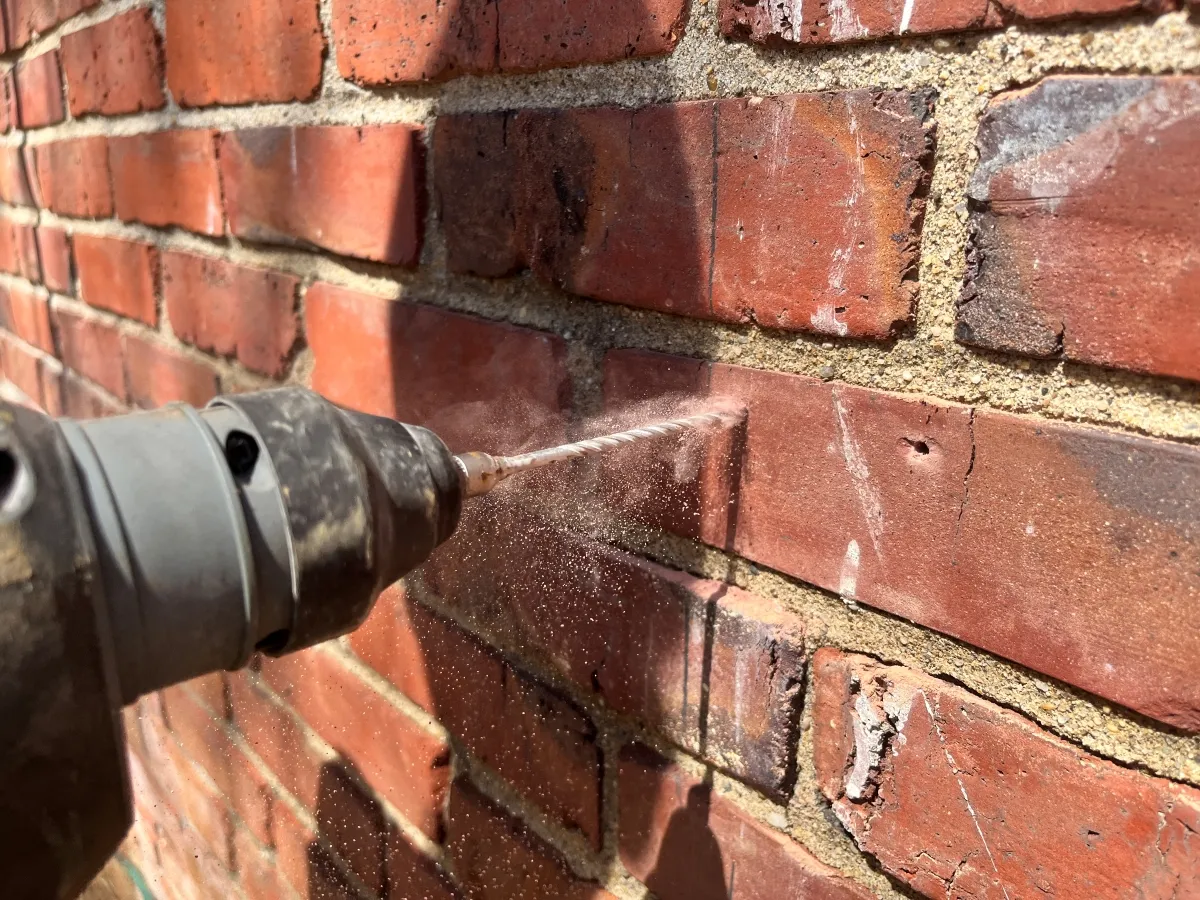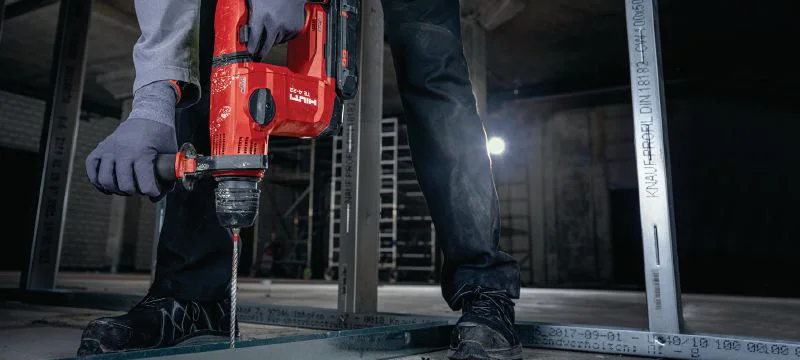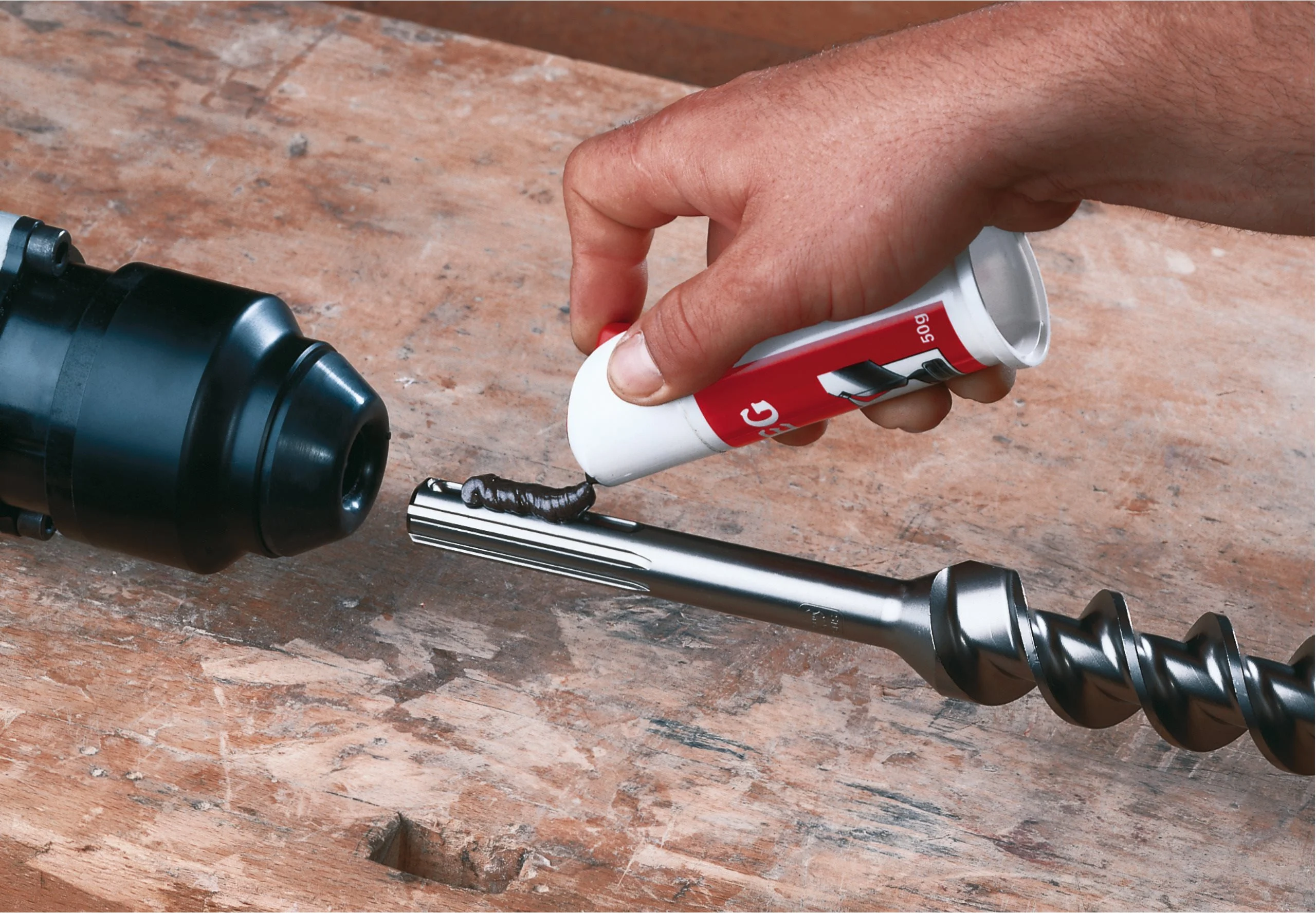Know Your Enemy: Reading the Wall
I can tell a lot about a wall just by looking at it. Is it old, soft, crumbly red brick? Or is it a modern, dense concrete block? They might both be 'masonry,' but they're worlds apart when it comes to drilling. Before you even think about grabbing your drill, take a second to understand what you're up against. Soft brick is like drilling through hard cheese; you can use a bit more speed and a lighter touch. But try that on a hard concrete block, and you'll just be polishing the surface and burning up your bit.
Natural stone is the real wild card. One piece of granite can be as hard as iron, while a piece of sandstone can be soft enough to carve with a knife. And don't even get me started on hollow bricks. If you go in too aggressively, you'll blow out the back and have nothing to anchor to. Reading the wall is the first and most important step to drilling effectively.
The Right Tool for the Job (No, Really)
I see it all the time: guys using a dull, beat-up bit to drill into hard stone and wondering why it's taking forever. Your drill bit is the business end of the whole operation. For general-purpose brick and block work, a standard SDS-Plus masonry bit is your best friend. But if you're stepping up to hard stone or heavily reinforced concrete, you need to bring out the big guns: a bit with a high-quality carbide tip. It's like the difference between a butter knife and a chef's knife.
And for the love of all that is holy, use a sharp bit! A sharp bit cuts, while a dull bit just grinds. You'll get a cleaner hole, you'll work faster, and you'll put a lot less strain on your drill and your body. I'd rather have a cheap drill with a brand-new, high-quality bit than a top-of-the-line drill with a worn-out, abused bit. The bit is what does the work. Respect it.
The Mason’s Touch: Technique Matters
The best drill in the world won't help you if your technique is sloppy. First, mark your spot accurately. Then, start the drill at a low speed, just enough to create a small pilot hole. This prevents the bit from 'walking' all over the surface. Once you have a good starting point, you can apply more speed and pressure.
Here's a tip that separates the pros from the amateurs: let the tool do the work. Don't lean on it with all your body weight. The hammer action of the drill is what breaks up the material, not your shoulder. Apply steady, even pressure and let the bit chew through the material at its own pace. And be sure to pull the bit out of the hole every 10-15 seconds to clear out the dust and debris. This 'pecking' motion keeps the hole clean and prevents the bit from getting clogged and overheated.
Finding the Sweet Spot: Speed and Pressure
Drilling isn't a drag race. Faster isn't always better. You have to find the 'sweet spot' for the material you're working with. For softer materials like common brick, you can use a higher drill speed and lighter pressure. For harder materials like dense block or stone, you need to slow down the rotation and let the hammer action do more of the work. If you go too fast on hard materials, you'll just generate a lot of heat, which dulls your bit and can even create a glazed, polished surface in the hole that's impossible to drill through.
Listen to your drill. You'll hear the motor start to strain if you're pushing too hard or running too fast. Pay attention to the dust coming out of the hole. If it's a fine, consistent powder, you're in the sweet spot. If it's chunky or sporadic, you may need to adjust your speed and pressure. It's a feel thing, and the more you do it, the better you'll get at it.
When Things Go Wrong: Getting Un-Stuck
It happens to the best of us: the bit gets stuck. The worst thing you can do is try to force it. You'll just make it worse and risk snapping the bit. The first thing to do is stop, put the drill in reverse, and see if you can gently back it out. If that doesn't work, it usually means the flutes are jammed with debris. Try to work the bit back and forth a little to loosen the dust, then try reverse again.
If you're still stuck, you might have hit a piece of rebar or a particularly hard aggregate. Don't panic. Sometimes, switching from rotary-hammer mode to hammer-only mode for a few seconds can help break up the obstruction. If all else fails, you may have to abandon the hole and drill a new one a few inches away. It's frustrating, but it's better than breaking a bit off in the wall. The best way to avoid getting stuck is to use the 'pecking' technique I mentioned earlier. A clean hole is a happy hole.
Work Smarter, Not Harder
At the end of the day, drilling into masonry is a skill. And like any skill, you get better with practice. But you can save yourself a lot of time and frustration by starting with the right tools, the right techniques, and the right mindset. Don't fight the wall; work with it. Let the tool do the work. And for goodness' sake, use a sharp bit. Follow these simple rules, and you'll be drilling faster, cleaner, and with a lot less effort than the guy next to you.



